CHEMICAL IDENTIFICATION
-
RTECS NUMBER :
-
TH9000000
-
CHEMICAL NAME :
-
Phthalazine, 1-hydrazino-, monohydrochloride
-
CAS REGISTRY NUMBER :
-
304-20-1
-
LAST UPDATED :
-
199806
-
DATA ITEMS CITED :
-
28
-
MOLECULAR FORMULA :
-
C8-H8-N4.Cl-H
-
MOLECULAR WEIGHT :
-
196.66
-
WISWESSER LINE NOTATION :
-
T66 CNNJ BMZ &GH
HEALTH HAZARD DATA
ACUTE TOXICITY DATA
-
TYPE OF TEST :
-
LD50 - Lethal dose, 50 percent kill
-
ROUTE OF EXPOSURE :
-
Oral
-
SPECIES OBSERVED :
-
Rodent - rat
-
DOSE/DURATION :
-
280 mg/kg
-
TOXIC EFFECTS :
-
Details of toxic effects not reported other than lethal dose value
-
TYPE OF TEST :
-
LD50 - Lethal dose, 50 percent kill
-
ROUTE OF EXPOSURE :
-
Intravenous
-
SPECIES OBSERVED :
-
Rodent - rat
-
DOSE/DURATION :
-
34 mg/kg
-
TOXIC EFFECTS :
-
Details of toxic effects not reported other than lethal dose value
-
TYPE OF TEST :
-
LD50 - Lethal dose, 50 percent kill
-
ROUTE OF EXPOSURE :
-
Oral
-
SPECIES OBSERVED :
-
Rodent - mouse
-
DOSE/DURATION :
-
188 mg/kg
-
TOXIC EFFECTS :
-
Details of toxic effects not reported other than lethal dose value
-
TYPE OF TEST :
-
LD50 - Lethal dose, 50 percent kill
-
ROUTE OF EXPOSURE :
-
Intraperitoneal
-
SPECIES OBSERVED :
-
Rodent - mouse
-
DOSE/DURATION :
-
83 mg/kg
-
TOXIC EFFECTS :
-
Details of toxic effects not reported other than lethal dose value
-
TYPE OF TEST :
-
LD50 - Lethal dose, 50 percent kill
-
ROUTE OF EXPOSURE :
-
Subcutaneous
-
SPECIES OBSERVED :
-
Rodent - mouse
-
DOSE/DURATION :
-
73 mg/kg
-
TOXIC EFFECTS :
-
Behavioral - convulsions or effect on seizure threshold Behavioral - excitement Lungs, Thorax, or Respiration - respiratory stimulation
-
TYPE OF TEST :
-
LD50 - Lethal dose, 50 percent kill
-
ROUTE OF EXPOSURE :
-
Intravenous
-
SPECIES OBSERVED :
-
Rodent - mouse
-
DOSE/DURATION :
-
71 mg/kg
-
TOXIC EFFECTS :
-
Details of toxic effects not reported other than lethal dose value
-
TYPE OF TEST :
-
TDLo - Lowest published toxic dose
-
ROUTE OF EXPOSURE :
-
Oral
-
SPECIES OBSERVED :
-
Mammal - dog
-
DOSE/DURATION :
-
59 mg/kg/2D-I
-
TOXIC EFFECTS :
-
Endocrine - hyperglycemia Blood - changes in serum composition (e.g. TP, bilirubin, cholesterol) Nutritional and Gross Metabolic - changes in chlorine
-
TYPE OF TEST :
-
TDLo - Lowest published toxic dose
-
ROUTE OF EXPOSURE :
-
Oral
-
SPECIES OBSERVED :
-
Rodent - mouse
-
DOSE/DURATION :
-
2950 mg/kg/78W-C
-
TOXIC EFFECTS :
-
Tumorigenic - neoplastic by RTECS criteria Lungs, Thorax, or Respiration - tumors Blood - lymphoma, including Hodgkin's disease
-
TYPE OF TEST :
-
TDLo - Lowest published toxic dose
-
ROUTE OF EXPOSURE :
-
Oral
-
DOSE :
-
176 mg/kg
-
SEX/DURATION :
-
female 1-22 day(s) after conception
-
TOXIC EFFECTS :
-
Reproductive - Specific Developmental Abnormalities - musculoskeletal system
-
TYPE OF TEST :
-
TDLo - Lowest published toxic dose
-
ROUTE OF EXPOSURE :
-
Oral
-
DOSE :
-
1100 mg/kg
-
SEX/DURATION :
-
female 7-17 day(s) after conception
-
TOXIC EFFECTS :
-
Reproductive - Maternal Effects - other effects Reproductive - Specific Developmental Abnormalities - musculoskeletal system
-
TYPE OF TEST :
-
TDLo - Lowest published toxic dose
-
ROUTE OF EXPOSURE :
-
Oral
-
DOSE :
-
1100 mg/kg
-
SEX/DURATION :
-
female 7-17 day(s) after conception
-
TOXIC EFFECTS :
-
Reproductive - Effects on Newborn - stillbirth Reproductive - Effects on Newborn - viability index (e.g., # alive at day 4 per # born alive)
-
TYPE OF TEST :
-
TDLo - Lowest published toxic dose
-
ROUTE OF EXPOSURE :
-
Subcutaneous
-
DOSE :
-
360 mg/kg
-
SEX/DURATION :
-
female 8-19 day(s) after conception
-
TOXIC EFFECTS :
-
Reproductive - Effects on Embryo or Fetus - fetotoxicity (except death, e.g., stunted fetus)
-
TYPE OF TEST :
-
DNA damage
-
TYPE OF TEST :
-
Sister chromatid exchange
MUTATION DATA
-
TYPE OF TEST :
-
Cytogenetic analysis
-
TEST SYSTEM :
-
Rodent - hamster Fibroblast
-
DOSE/DURATION :
-
7500 ug/L
-
REFERENCE :
-
ESKHA5 Eisei Shikenjo Hokoku. Bulletin of the Institute of Hygienic Sciences. (Kokuritsu Eisei Shikenjo Kagaku, 18-1 Bushitsu Johobu, Setagaya-ku, Tokyo 158, Japan) V.1- 1886- Volume(issue)/page/year: (96),55,1978 *** REVIEWS *** IARC Cancer Review:Animal Limited Evidence IMEMDT IARC Monographs on the Evaluation of Carcinogenic Risk of Chemicals to Man. (WHO Publications Centre USA, 49 Sheridan Ave., Albany, NY 12210) V.1- 1972- Volume(issue)/page/year: 24,85,1980 *** NIOSH STANDARDS DEVELOPMENT AND SURVEILLANCE DATA *** NIOSH OCCUPATIONAL EXPOSURE SURVEY DATA : NOES - National Occupational Exposure Survey (1983) NOES Hazard Code - X6128 No. of Facilities: 145 (estimated) No. of Industries: 1 No. of Occupations: 4 No. of Employees: 3818 (estimated) No. of Female Employees: 3142 (estimated)
|
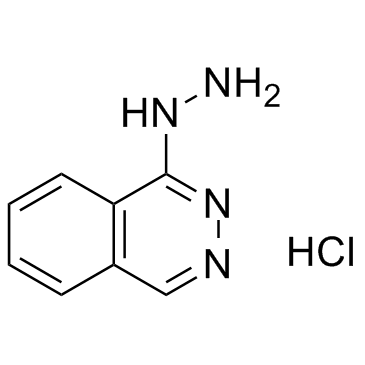


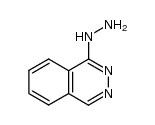 CAS#:1044569-46-1
CAS#:1044569-46-1![3-HYDROXYMETHYL-S-TRIAZOLO[3,4-A]PHTHALAZINE structure](https://image.chemsrc.com/caspic/226/54687-66-0.png) CAS#:54687-66-0
CAS#:54687-66-0![s-Triazolo[3,4-a]phthalazine structure](https://image.chemsrc.com/caspic/469/234-80-0.png) CAS#:234-80-0
CAS#:234-80-0![3-methyl-1,2,4-triazolo[3,4-a]phthalazine structure](https://image.chemsrc.com/caspic/174/20062-41-3.png) CAS#:20062-41-3
CAS#:20062-41-3 CAS#:119-39-1
CAS#:119-39-1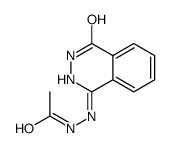 CAS#:65846-18-6
CAS#:65846-18-6![3-(D-galacto-pentitol-1-yl)-1,2,4-triazolo[3,4-a]phthalazine structure](https://image.chemsrc.com/caspic/105/79364-48-0.png) CAS#:79364-48-0
CAS#:79364-48-0 CAS#:56173-18-3
CAS#:56173-18-3 CAS#:103429-70-5
CAS#:103429-70-5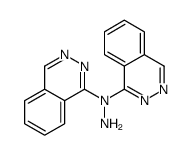 CAS#:103429-71-6
CAS#:103429-71-6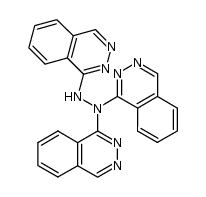 CAS#:103429-73-8
CAS#:103429-73-8
